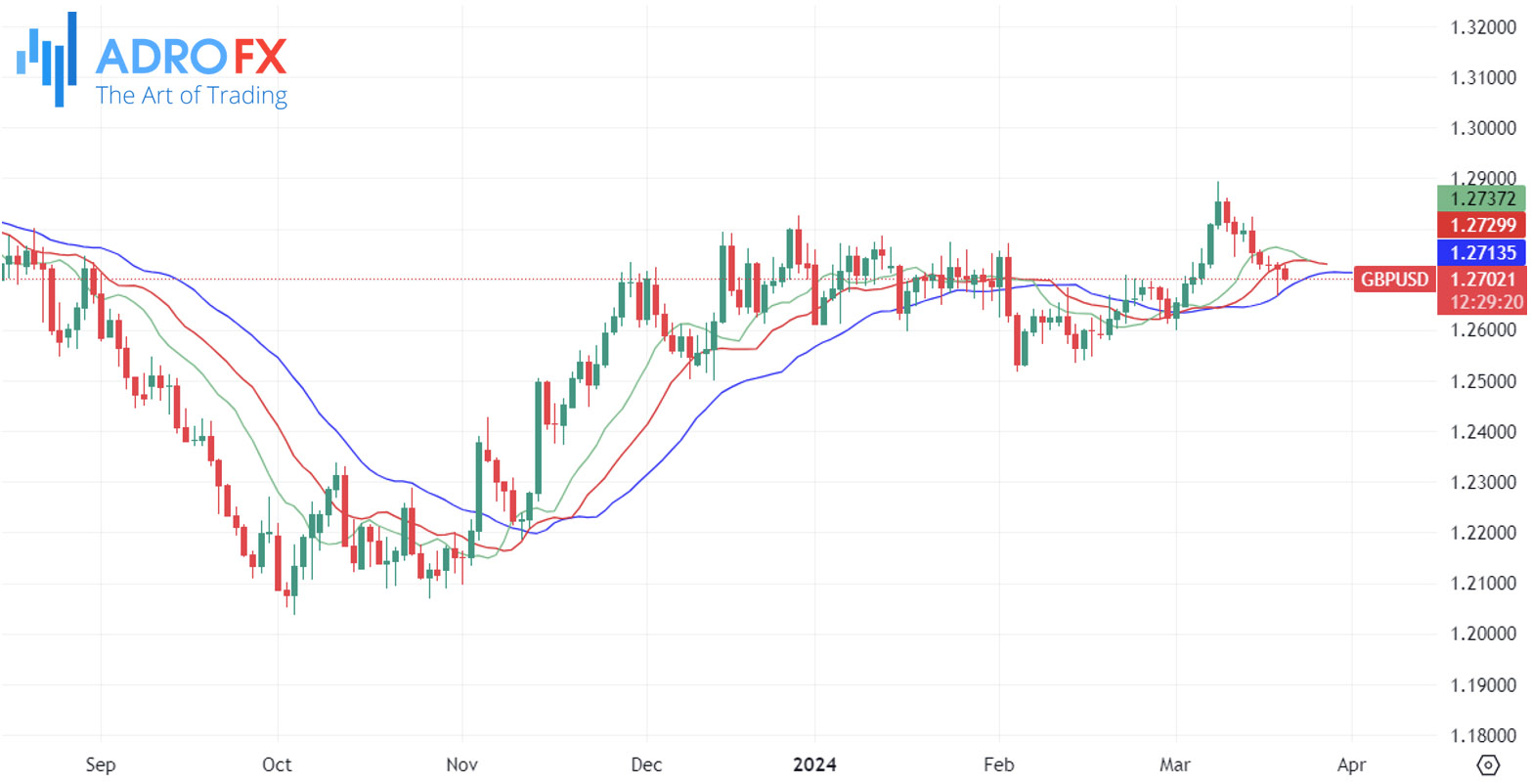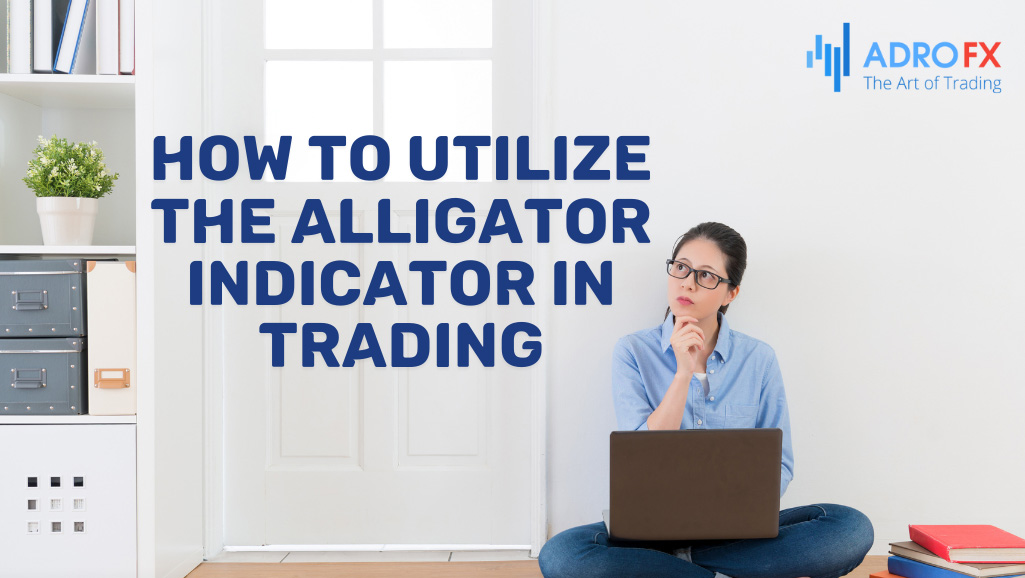Unlocking the Potential of the Alligator Indicator: A Comprehensive Guide for Traders

Understanding the Alligator Indicator is essential for traders seeking to navigate the complexities of financial markets with precision and insight. Developed by the esteemed trader and author Bill Williams, this indicator has emerged as a cornerstone of technical analysis, offering traders a strategic advantage in identifying potential trends and market opportunities. By harnessing its unique methodology, traders can decipher market dynamics and make informed decisions to optimize their trading endeavors. This article delves into the intricacies of the Alligator Indicator, exploring its components, functionalities, and practical applications in trading.
What Is the Alligator Indicator?
The Alligator Indicator stands as a cornerstone of technical analysis within financial markets, specifically catering to trading endeavors. Originating from the insights of trader and author Bill Williams, this indicator capitalizes on the observation that markets trend roughly 15-30% of the time, with the remainder characterized by sideways movement in ranging patterns. Its primary objective lies in assisting traders in pinpointing trending markets to capitalize on potential profits.
The Alligator Indicator, a complex yet powerful tool in technical analysis, is composed of three distinct smoothed moving averages (SMAs) thoughtfully plotted on price charts. These lines, each representing different periods and shifts, include the Jaw (depicted as the blue line), a 13-period SMA shifted 8 bars into the future; the Teeth (illustrated by the red line), an 8-period SMA shifted 5 bars into the future; and the Lips (presented as the green line), a 5-period SMA shifted 3 bars into the future.

Functionally, the Alligator Indicator acts as a guiding light for traders in discerning market trends and consolidation phases. When the three lines converge or come into close proximity, it suggests a ranging or consolidating market. Conversely, a divergence pattern emerges when the Jaw finds its position at the bottom, followed by the Teeth and then the Lips at the top, indicating a strong trend.
Traders often lean on specific signals emanating from the Alligator Indicator, such as crossovers between the lines or price movements relative to these lines, to precisely time their entries and exits in trades. Ultimately, the Alligator Indicator plays a pivotal role in not only identifying potential trends but also validating trend directions and aiding in making informed trading decisions grounded in trend strength and market momentum.
Reading the Alligator Indicator
Deciphering and interpreting the Alligator Indicator necessitates a grasp of its components and the signals it generates. Comprising three smoothed moving averages (SMAs) - the Jaw (blue line), the Teeth (red line), and the Lips (green line) - this indicator operates on distinct periods.
In trending markets, traders scrutinize the alignment of these lines to validate trends or pinpoint consolidation phases. A close convergence of the lines indicates a dormant or ranging market, urging traders to proceed cautiously with significant positions. Conversely, a divergence, with the Jaw positioned lowest, followed by the Teeth and the Lips at the apex, signifies a robust trend. In bullish trends, the sequence is Jaw (blue), followed by Teeth (red), and then Lips (green), while in bearish trends, the order reverses.
Buy signals manifest when the Lips crosses above the Teeth from below, while both lines are beneath the Jaw. This hints at potential upward momentum, prompting traders to contemplate buying. Conversely, sell signals emerge when the Lips crosses below the Teeth from above, with both lines positioned above the Jaw, signaling potential downward momentum and prompting traders to consider selling.
However, effective risk management is paramount. Traders must consistently employ Stop Loss orders to curtail potential losses, especially when relying on signals from the Alligator Indicator. Furthermore, it's prudent to supplement Alligator signals with other technical indicators or fundamental analysis to corroborate trade entries and exits. This holistic approach empowers traders to make informed decisions and navigate market uncertainties more adeptly.

How to Utilize the Alligator Indicator in Trading
Utilizing the Alligator Indicator for trading involves leveraging its signals to pinpoint potential entry and exit positions within the market. Here's a systematic guide on trading with the Alligator Indicator:
To differentiate between Trending and Ranging Markets, scrutinize the alignment of the Alligator's lines. A close intertwining suggests a ranging market, whereas a noticeable divergence indicates a potential trend. Confirm the trend's orientation by observing the correct sequence of lines: Jaw (depicted in blue) positioned beneath, followed by Teeth (highlighted in red), and then Lips (presented in green) for an uptrend; conversely, the sequence reverses for a downtrend.
Entry signals can be identified through various methods:
Crossover Signals involve monitoring the Lips (green line) crossing over or under the Teeth (red line), signaling a potential shift in trend direction. A bullish crossover, with the Lips above the Teeth, suggests a buying opportunity, while a bearish crossover, with the Lips below the Teeth, indicates a selling opportunity.
Breakouts occur when price movements surpass or dip below the Alligator's lines. An uptrend breakout transpires when the price exceeds the Alligator's lines, whereas a downtrend breakout emerges when the price falls below these lines, signaling potential entry points.
Confirmation of entry signals is essential:
Validate these signals with supplementary technical indicators or price action patterns to bolster trade success rates. Look for corroborative evidence such as escalating volume or aligned momentum in the trade direction.
Exit strategies should be executed prudently:
Utilize the Alligator Indicator to pinpoint potential exit positions. Consider exiting a trade when the Alligator's lines start converging or when the Lips re-crosses the Teeth in the opposing direction of your trade. Implement trailing Stop Loss orders to safeguard profits as the trend persists, ensuring risk mitigation throughout the trading journey.
Additionally, engage in regular practice and adaptation to master the nuances of the Alligator Indicator. Start by trading on demo accounts or with small position sizes until you develop a firm understanding of its signals. Be adaptable, adjusting your trading approach in response to evolving market conditions and the reliability of signals generated by the Alligator Indicator. It's vital to remember that while the Alligator Indicator offers valuable insights into trend identification and entry points, it's not infallible. To enhance your trading decisions, supplement it with other analytical methods and robust risk management strategies. By adopting a comprehensive approach, you'll be better equipped to navigate the complexities of the financial markets.
Risk Management Principles with the Alligator Indicator
Effective risk management is imperative when employing the Alligator Indicator, as with any trading strategy, to protect capital and mitigate potential losses. Here are essential risk management principles to consider when utilizing the Alligator Indicator:
Position Sizing
- Determine position sizes based on your risk tolerance and account size.
- Avoid overexposure by risking only a small percentage of your balance per trade.
- This approach ensures that individual trades have minimal impact on your overall account.
Stop Loss Orders
- Utilize Stop Loss orders to limit potential losses on each trade.
- Place stops strategically, considering support/resistance levels, recent price movements, or Alligator Indicator signals.
- Adjust Stop Loss levels as trades progress to lock in profits or protect against adverse price movements.
Risk-to-Reward Ratio
- Evaluate the risk-to-reward ratio for each trade to ensure favorable potential gains compared to potential losses.
- Aim for a ratio of at least 1:2 or higher, where potential profits are at least double potential losses.
- This balance helps ensure that winning trades compensate for losing trades over time.
Diversification
- Spread the risk by avoiding overcommitment to a single trade or asset.
- Diversify your trading portfolio across various instruments, markets, or strategies.
- This mitigates exposure to any single trade or market event, reducing the impact of adverse movements.
Trade with a Plan
- Develop a clear trading plan outlining entry/exit rules, risk management strategies, and execution procedures.
- Stick to your plan and avoid emotional decision-making, such as overtrading or revenge trading.
- Emotional decisions can lead to impulsive and irrational actions, harming overall performance.
- Exit underperforming trades promptly and capitalize on profits as per your plan.
By adhering to these risk management principles when utilizing the Alligator Indicator, traders can safeguard their capital, minimize losses, and improve overall trading performance over time.

Advantages and Disadvantages of Using the Alligator Indicator
The Alligator Indicator provides traders with numerous benefits in navigating the financial markets:
- Trend Identification
By analyzing the arrangement of the three moving averages (Jaw, Teeth, and Lips), the Alligator Indicator assists traders in identifying trends, allowing them to focus on trading opportunities aligned with the prevailing market direction.
- Clear Signals
This indicator offers clear and easily understandable signals. Crossover signals, where the Lips crosses above or below the Teeth, indicate potential changes in trend direction, facilitating quick decision-making for traders.
- Confirmation Tool
The Alligator Indicator serves as a confirmation tool for other technical indicators or trading strategies. It can be used alongside other indicators to validate signals, enhancing the likelihood of successful trades and reducing false signals.
- Adaptability
This indicator is versatile, suitable for various timeframes and markets. Whether traders are day traders, swing traders, or long-term investors, they can adapt the Alligator Indicator to align with their preferred trading styles and timeframes.
- Risk Management
By helping traders identify trends and potential entry and exit points, the Alligator Indicator contributes to effective risk management. Traders can utilize it to implement Stop Loss orders, manage position sizes, and assess risk-to-reward ratios, thereby minimizing potential losses and maximizing profits.
Despite its advantages, the Alligator Indicator also presents certain limitations and drawbacks:
- Lagging Nature
Similar to most trend-following indicators, the Alligator Indicator reacts to price movements after they occur, resulting in delayed signals. Traders may experience missed trading opportunities or enter trades after significant price moves have already taken place.
- Whipsaw Signals
In choppy or ranging markets, the Alligator Indicator can generate false or whipsaw signals. Frequent crossover signals may lead to premature trade entries and exits, resulting in losses or reduced profitability.
- Over-reliance on Indicator
Relying solely on the Alligator Indicator for trading decisions without considering other factors such as market fundamentals or economic news can be risky. It's essential to integrate the Alligator Indicator into a comprehensive trading strategy and combine it with other forms of analysis for more informed decision-making.
- Subjectivity in Interpretation
While the Alligator Indicator provides clear signals, interpreting these signals can sometimes be subjective. Traders may have different criteria for determining trend direction or entry and exit points, leading to inconsistencies in trading decisions.
- Not Suitable for All Market Conditions
While effective in trending markets, the Alligator Indicator may perform poorly in choppy or sideways markets. During ranging conditions, the indicator's lines may converge, providing unclear signals and making it challenging to identify profitable trading opportunities.
- No Guarantee of Success
There is no assurance of success when relying on the Alligator Indicator, despite its usefulness in identifying trends and possible entry and exit points. Market conditions are subject to rapid changes, and unforeseen events or factors can impact price movements, resulting in losses even when employing technical indicators like the Alligator.
In conclusion, while the Alligator Indicator can serve as a valuable tool for traders, it's crucial to acknowledge its limitations and integrate it carefully within a comprehensive trading strategy. Traders should supplement its use with other forms of analysis and employ risk management techniques to improve their trading decisions and outcomes.
Conclusion
In conclusion, the Alligator Indicator stands as a powerful ally for traders, providing valuable insights into market trends and facilitating well-informed trading decisions. While it offers numerous advantages, including trend identification, clear signals, and adaptability, traders must also be mindful of its limitations, such as lagging nature and susceptibility to whipsaw signals. By integrating the Alligator Indicator into a comprehensive trading strategy and exercising prudent risk management, traders can harness its potential to navigate the markets effectively and strive for consistent profitability. Ultimately, the Alligator Indicator serves as a versatile tool for traders, guiding them through the dynamic landscape of financial markets with confidence and precision.
About AdroFx
Established in 2018, AdroFx is known for its high technology and its ability to deliver high-quality brokerage services in more than 200 countries around the world. AdroFx makes every effort to keep its customers satisfied and to meet all the trading needs of any trader. With the five types of trading accounts, we have all it takes to fit any traders` needs and styles. The company provides access to 115+ trading instruments, including currencies, metals, stocks, and cryptocurrencies, which make it possible to make the most out of trading on the financial markets. Considering all the above, AdroFx is the perfect variant for anyone who doesn't settle for less than the best.










